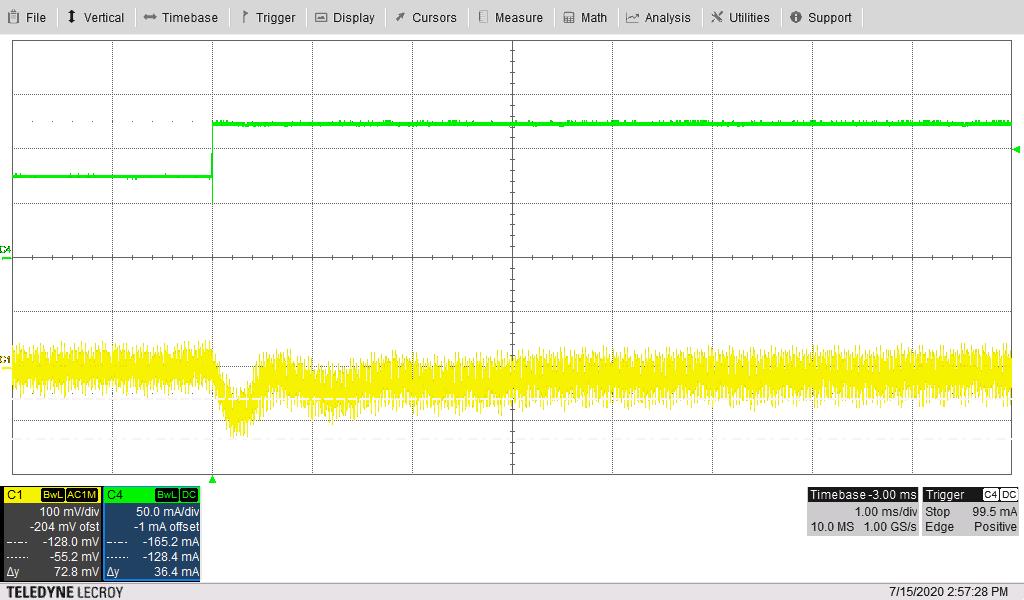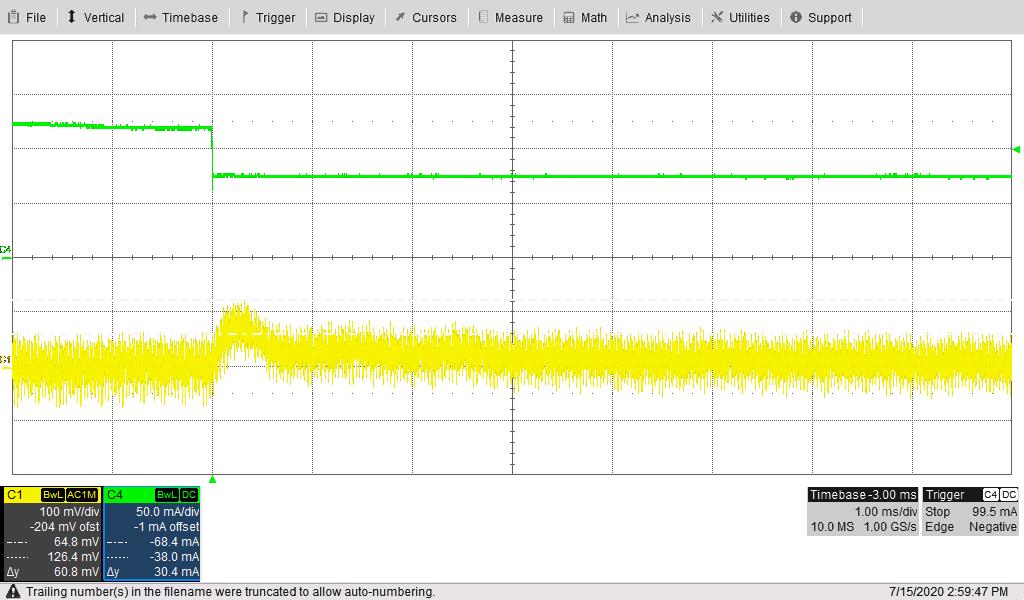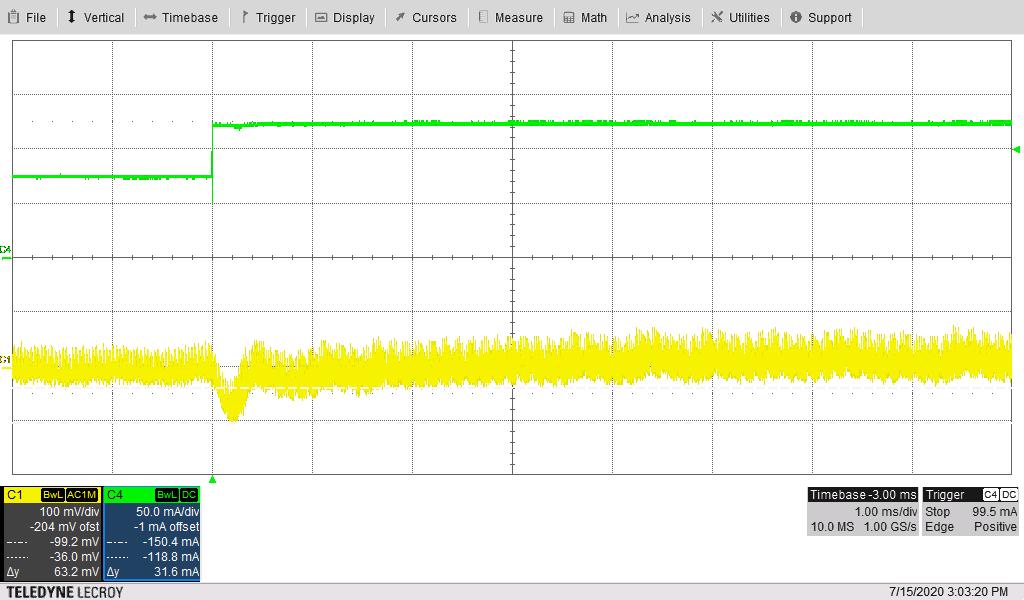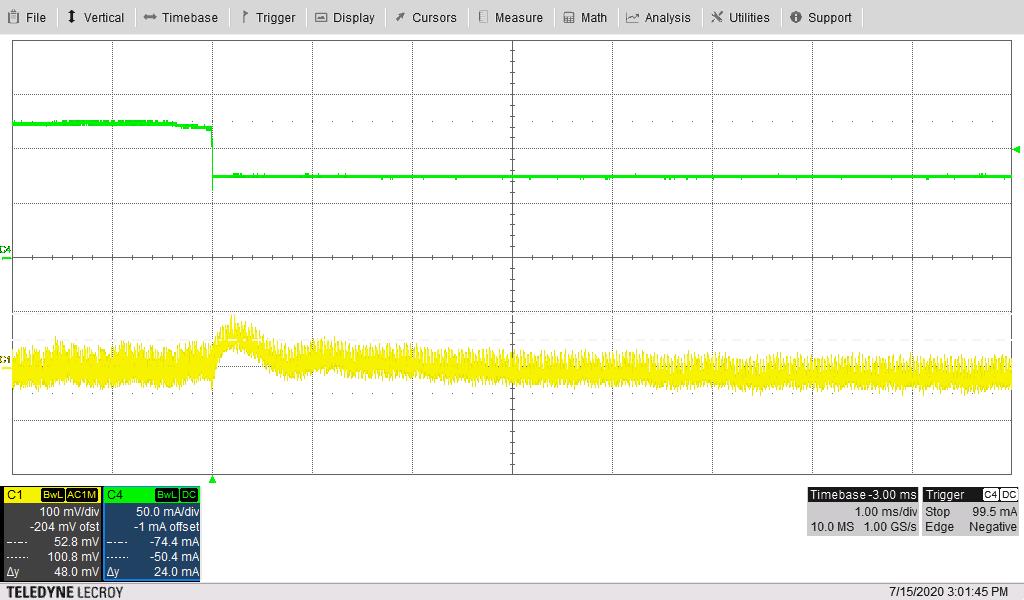TIDT193 August 2020 – MONTH
3.4 Load Transients
The following image illustrates the 14-V output voltage (AC coupled) when the load current is stepped between 80 mA and 130 mA (50-mA load step), VIN = 30 V.
 Figure 3-19 Load Transient, 14-V Output Voltage (AC Coupled) (VOUT: 100 mV/div, IOUT: 50 mA/div, 1 ms/div)
Figure 3-19 Load Transient, 14-V Output Voltage (AC Coupled) (VOUT: 100 mV/div, IOUT: 50 mA/div, 1 ms/div)The following image illustrates the 14-V output voltage (AC coupled) when the load current is stepped between 130 mA and 80 mA (50-mA load step), VIN = 30 V.
 Figure 3-20 Load Transient, 14-V Output Voltage (AC Coupled) (VOUT: 100 mV/div, IOUT: 50 mA/div, 1 ms/div)
Figure 3-20 Load Transient, 14-V Output Voltage (AC Coupled) (VOUT: 100 mV/div, IOUT: 50 mA/div, 1 ms/div)The following image illustrates the 14-V output voltage (AC coupled) when the load current is stepped between 80 mA and 130 mA (50-mA load step), VIN = 120 V.
 Figure 3-21 Load Transient, 14-V Output Voltage (AC Coupled) (VOUT: 100 mV/div, IOUT: 50 mA/div, 1 ms/div).
Figure 3-21 Load Transient, 14-V Output Voltage (AC Coupled) (VOUT: 100 mV/div, IOUT: 50 mA/div, 1 ms/div).  Figure 3-22 Load Transient, 14-V Output Voltage (AC Coupled) (VOUT: 100 mV/div, IOUT: 50 mA/div, 1 ms/div).
Figure 3-22 Load Transient, 14-V Output Voltage (AC Coupled) (VOUT: 100 mV/div, IOUT: 50 mA/div, 1 ms/div).